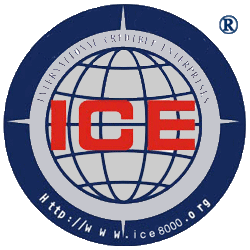Risk analysis of over-management of enterprises-World Credit Organization
3.12 Risk analysis of over-management of enterprises
If an enterprise over-expands, but its working capital cannot meet the needs of expansion, even if the enterprise is making profits or has a high profit margin, it will fall into financial crisis due to a broken capital chain, and even lead to bankruptcy. This is known as over-operating, and is also often referred to as over-trading. Many enterprises were unable to pay for goods due to over-operation, and some enterprises closed down due to over-operation.
After discovering the following three phenomena, you should pay attention to analyze the causes and be alert to whether there is a risk of over-management
1. The current ratio is lower than 1:1, or the working capital is negative, that is to say, the current assets are less than the current liabilities, also known as deficit working capital.
Second, operating cash flow is negative.
3. The ratio of inventory to working capital is greater than 100%.
Fourth, the company expanded rapidly, and sales revenue increased significantly.
Practical case: Over-management caused corporate bankruptcy
There is a machinery factory in Germany, established in 1992. In just 5 years, this factory has grown from a small workshop into a large-scale industrial enterprise with more than 5,000 employees, exporting its products to more than 30 countries, with an annual export value of 2 billion US dollars, and an annual growth rate of 30%. .
It turns out that this manufacturing plant has a patented mechanical processing technology. The emergence of this patented technology has doubled the efficiency of its products compared with similar mechanical products. Therefore, all countries are asking for products from it. The production raw materials of this factory are mainly purchased from 7 enterprises in my country. With the development of the factory, the exports of seven Chinese enterprises have increased several times, from about US$1 million at the beginning to more than US$7 million in 1996. However, all supplies are paid onshore within 90-120 days. Although the bosses of these seven companies had doubts about such a large amount of credit sales, they did not take any measures considering the size and efficiency of the other party, especially because they had never delayed payment in the past few years. In April 1997, seven Chinese companies suddenly received bankruptcy notices from the German court. At this time, the accounts of 7 companies totaling 30 million U.S. dollars have not been recovered. The seven companies had no choice but to send people to Germany to participate in bankruptcy liquidation.
It turned out that this manufacturing plant suffered from a common problem of many companies-over-management. The cause was that the company sold a large number of its products to its customers on credit, resulting in a shortage of working capital. At the same time, due to the substantial increase in the scale of the enterprise, the enterprise applied for a huge loan from the bank. In Germany, if the enterprise fails to pay the principal and interest on time after receiving the bank reminder notice, the bank has the right to apply to the court for bankruptcy of the arrears enterprise. This company was forced into bankruptcy for this reason.
The characteristics of this enterprise are: the ratio of inventory to working capital is much more than 100%, the inventory turnover rate is high, but the current ratio is very low.The above content is excerpted from "ICE8000 Credit Investigation, Analysis, and Rating" (written by Fang Bangjian, free to use, but please indicate the source)


